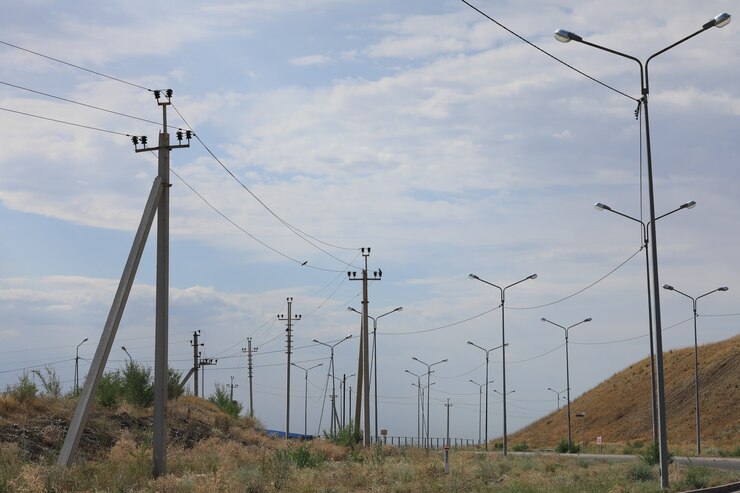Contatc
Smart Grids and Power Distribution: The Future of Grid Reliability
2025-02-10
Due to changes in current and future consumption, demand for power distribution and grid reliability are paramount in the contemporary world as they deliver electricity to homes, businesses, industries among other areas. With the growth of the demand for energy and the integration of renewable energies into power systems, the issue of power supply reliability and stability of the grid becomes a critical issue. This article discusses the modern problems and opportunities associated with the reliability of the power distribution network and how such concepts like smart grid and Dg will change the structure of the grid reliability in the future.
Understanding Power Distribution and Grid Reliability
The power distribution and grid reliability network is the last level of the electricity supply chain, which is used to transport electrical energy from the distribution network to the consumers. This section of the grid is therefore comprised of transformers, circuit breakers, and other equipment that ensure power deliveries to homes, industries, and commercial buildings are stable and constant. However, the existence of this network is quite a challenge to factors such as weather conditions, almost degrading infrastructure, and increasing demand for electricity.
The term used to describe the power grid is Grid reliability, thus refers to the capacity of the grid to deliver electrical power uninterruptedly while in other cases this can be during power outages, blackouts, or brownouts. The objective is to reduce the frequency and extent of interruptions in power supply and build adequate protection for the power grid from disturbance forces which include acts of nature, terrorists, hackers, or equipment breakdown.
Factors Affecting Power Distribution and Grid Reliability
As observed from the above analysis, several factors cover the assessment of power system reliability and the ability of the grid.
Aging Infrastructure:
Most current models of power distribution systems are still old-fashioned and require upgrading. Used transformers, electric wire and cables, and installation of switchgear and breakers are highly likely to fail thus triggering power blackouts, and the processes take quite a long time before being restored.
Weather Events:
Hurricanes and some other forms of extreme weather, such as snowstorms or heat waves are very destructive to the power grid. One of the most important aspects of the grid is when several operational conditions are present in extreme weather conditions as storms, heat waves, hurricanes or similar phenomena are becoming increasingly frequent and intense due to climate change.
Cybersecurity Threats:
The smart meters and AMI also bring new risks into the grid infrastructure. The disruption of power distribution systems is feasible through cyberattacks thus causing prolonged and contingent problems in the electricity grid.
Renewable Energy Integration:
This is because, with the new renewable energy sources such as solar and wind energy, the issue of fluctuating stability of the energy grid is enhanced. Integration of renewable energy and grid reliability have emerged as significant issues and these two aspects can be strongly connected, they both need control over the unstable input power.

The Role of Smart Grids in Enhancing Reliability
Several innovative technologies are being developed today but the most effective one for the stability of the grid is smart grids. These grids incorporate some features like monitoring, automation, and data analysis to increase the reliability of the power distribution. Smart grid: They include the use of distributed energy resources such as roof-tops solar, storage of batteries to ensure faster response to disruptions.
The smart grid also includes demand management that allows consumers to respond to the condition of the grid by using real-time control of demand. This will reduce the peak demand hastening the resilience of the grid at large.
Technologies Enhancing Power Distribution Reliability
Some of these technologies include fault detection, predictive maintenance technologies, and grid automation technologies amongst others. Specifically, predictive maintenance is the determination and usage of sensors with machine learning that determines when a piece of equipment is most likely to fail and does the necessary work to prevent the failure from occurring. For instance, SCADA (Supervisory Control and Data Acquisition) systems are capable of futuristic monitoring of the health of the grid and sending an alert to the operators in the event of an impending fault.
In the same regard, Fault Location, Isolation, and Service Restoration (FLISR) systems are aimed at female the service interruption time to the consumer to a minimum in the cases when the fault is identified within the distribution system. These are important in ensuring the reliability of the distribution grid mainly in populated and sensitive regions such as hospitals and industrial areas.
How Does Grid Environment Protect Itself from Cyber Threats?
Especially as the number of interconnections between electrical grids rises, and the electrification of various industrial sectors continues, cybersecurity proves to be the key enabler for secure electricity networks. The threats such as cybercriminals, hackers, malicious insiders as well and system integrators can take advantage of the grid vulnerability resulting in breakdowns and probably blackouts.
To overcome these risks, the utility sector must come up with the correct protective measures such as encryption, network segmentation, and monitoring tools. Using real-time systems, one can identify any abnormality in the grid activity while probability evaluation of the grid reliability shows the possibility of cyberattack on grid systems.
Best Practices for Enhancing Power Distribution and Grid Reliability
Thus, the improvement of the grids’ reliability and the resilience of the power distribution needs a complex solution. Consulting this paper reveals the following best practices that may be used to improve the reliability of power systems:
Modernization of Infrastructure:
Transformers, switchgear, and some transmission components are functions of a power station that require frequent replacement once they are too old. Modern equipment is stronger and can therefore be able to cater for the increasing demand within the energy systems.
Investing in Renewable Energy Storage:
By incorporating energy storage systems which include batteries the excess energy that has been generated from renewable sources is stored and can be used whenever necessary to meet demand. From the above discussion, it is seen that this enhances the grid stability and reliability.
Regular Maintenance and Fault Detection:
Outage management systems as well as Predictive maintenance all have great benefits in decreasing physical plant outages due to equipment failures. These technologies can greatly help in the evaluation of faults before they cause persistent power outages.
Promoting Grid Automation:
The ability to respond faster during disruptions significantly affects the reliability of the distribution system by employing automation technologies. They include, for example, the switches for redirecting the power supply when there is a fault to avoid circuit breakage.
Resilience Planning for Extreme Weather:
The ability of the grid to deal with natural calamities is fundamental. Utility companies need to ensure that their equipment is weather-proof and prepare for quick response in terms of restoring electricity as soon as natural disasters disrupt the electricity.
Conclusion
In the face of increasing demand, renewable energy integration, and emerging threats like cybersecurity risks, ensuring power distribution reliability and grid stability has never been more critical. By investing in smart grids advanced fault detection, and predictive maintenance, utilities can enhance the resilience of their power distribution systems. For more information on how to improve power distribution and grid reliability, visit XY Tower.

Hey, I’m Chunjian Shu
"X.Y. Tower: Reliable, innovative solutions for high-quality towers and electrical equipment with professional service.
